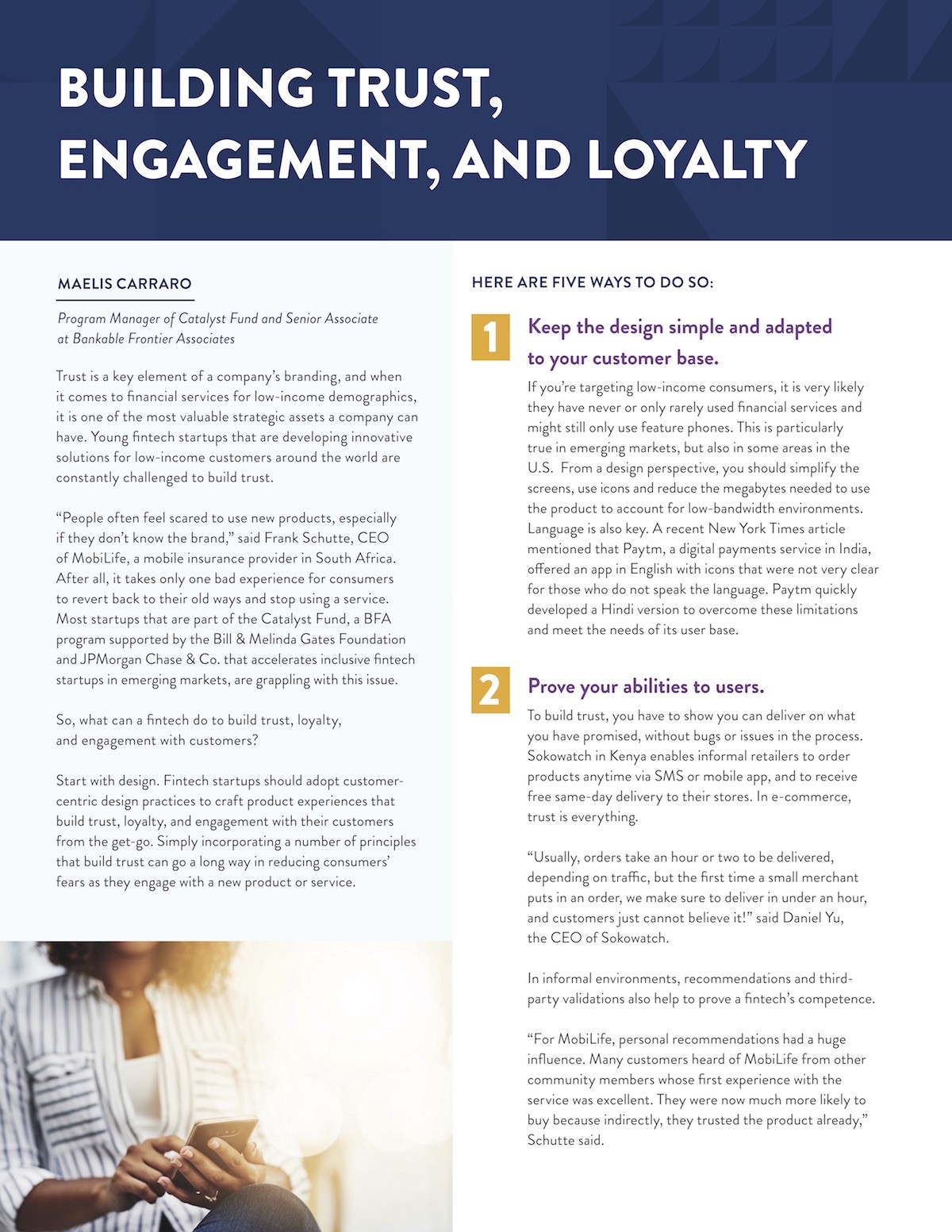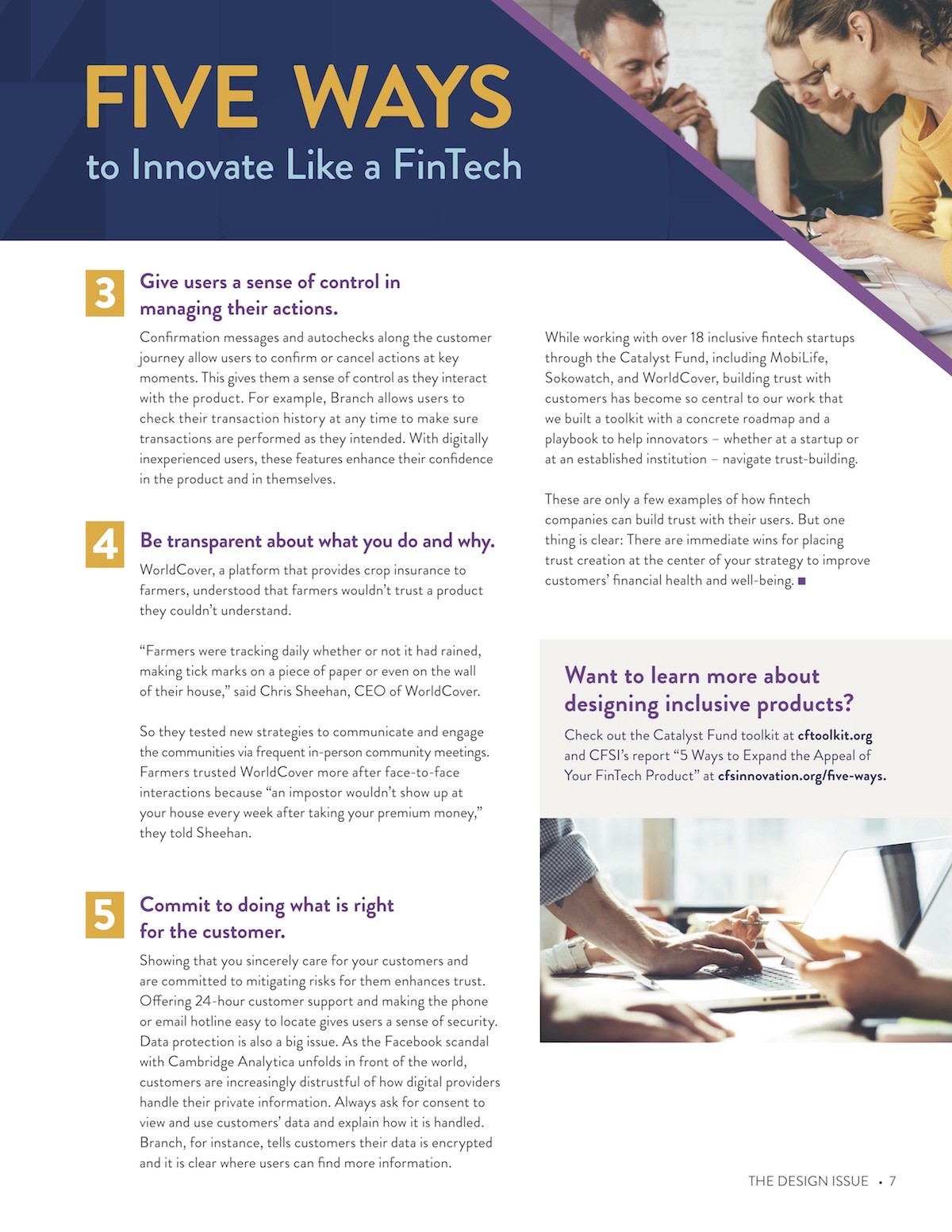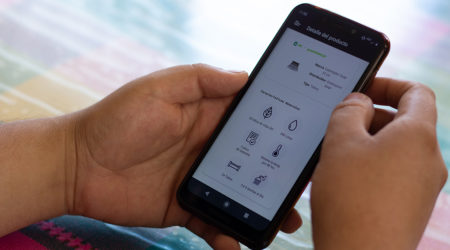Build Trust, Engagement, and Loyalty: Five Ways to Innovate Like a FinTech

Trust is a key element of a company’s branding, and when it comes to financial services for low-income demographics, it is one of the most valuable strategic assets a company can have. Young fintech startups that are developing innovative solutions for low-income customers around the world are constantly challenged to build trust.
“People often feel scared to use new products, especially if they don’t know the brand,” said Frank Schutte, CEO of MobiLife, a mobile insurance provider in South Africa. After all, it takes only one bad experience for consumers to revert back to their old ways and stop using a service. Most startups that are part of the Catalyst Fund, a BFA program supported by the Bill & Melinda Gates Foundation and JPMorgan Chase & Co. that accelerates inclusive fintech startups in emerging markets, are grappling with this issue.
So, what can a fintech do to build trust, loyalty, and engagement with customers?
Start with design
Fintech startups should adopt customer-centric design practices to craft product experiences that build trust, loyalty, and engagement with their customers from the get-go. Simply incorporating a number of principles that build trust can go a long way in reducing consumers’ fears as they engage with a new product or service.
Here are Five Ways to Do So:
1. Keep the design simple and adapted to your customer base.
If you’re targeting low-income consumers, it is very likely they have never or only rarely used financial services and might still only use feature phones. This is particularly true in emerging markets, but also in some areas in the U.S. From a design perspective, you should simplify the screens, use icons and reduce the megabytes needed to use the product to account for low-bandwidth environments. Language is also key. A recent New York Times article mentioned that Paytm, a digital payments service in India, offered an app in English with icons that were not very clear for those who do not speak the language. Paytm quickly developed a Hindi version to overcome these limitations and meet the needs of its user base.
2. Prove your abilities to users.
To build trust, you have to show you can deliver on what you have promised, without bugs or issues in the process. Sokowatch in Kenya enables informal retailers to order products anytime via SMS or mobile app, and to receive free same-day delivery to their stores. In e-commerce, trust is everything.
“Usually, orders take an hour or two to be delivered, depending on traffic, but the first time a small merchant puts in an order, we make sure to deliver in under an hour, and customers just cannot believe it!” said Daniel Yu, the CEO of Sokowatch.
In informal environments, recommendations and third- party validations also help to prove a fintech’s competence.
“For MobiLife, personal recommendations had a huge influence. Many customers heard of MobiLife from other community members whose first experience with the service was excellent. They were now much more likely to buy because indirectly, they trusted the product already,” Schutte said.
3. Give users a sense of control in managing their actions.
Confirmation messages and autochecks along the customer journey allow users to confirm or cancel actions at key moments. This gives them a sense of control as they interact with the product. For example, Branch allows users to check their transaction history at any time to make sure transactions are performed as they intended. With digitally inexperienced users, these features enhance their confidence in the product and in themselves.
4. Be transparent about what you do and why.
WorldCover, a platform that provides crop insurance to farmers, understood that farmers wouldn’t trust a product they couldn’t understand.
“Farmers were tracking daily whether or not it had rained, making tick marks on a piece of paper or even on the wall of their house,” said Chris Sheehan, CEO of WorldCover.
So they tested new strategies to communicate and engage the communities via frequent in-person community meetings. Farmers trusted WorldCover more after face-to-face interactions because “an impostor wouldn’t show up at
your house every week after taking your premium money,” they told Sheehan.
5. Commit to doing what is right for the customer.
Showing that you sincerely care for your customers and are committed to mitigating risks for them enhances trust. Offering 24-hour customer support and making the phone or email hotline easy to locate gives users a sense of security. Data protection is also a big issue. As the Facebook scandal with Cambridge Analytica unfolds in front of the world, customers are increasingly distrustful of how digital providers handle their private information. Always ask for consent to view and use customers’ data and explain how it is handled. Branch, for instance, tells customers their data is encrypted and it is clear where users can find more information.
While working with over 18 inclusive fintech startups through the Catalyst Fund, including MobiLife, Sokowatch, and WorldCover, building trust with customers has become so central to our work that we built a toolkit with a concrete roadmap and a playbook to help innovators — whether at a startup or at an established institution — navigate trust-building.
These are only a few examples of how fintech companies can build trust with their users. But one thing is clear: There are immediate wins for placing trust creation at the center of your strategy to improve customers’ financial health and well-being.
Want to learn more about designing inclusive products?
Check out the Catalyst Fund toolkit at techstartups101.com and CFSI’s report “5 Ways to Expand the Appeal of Your FinTech Product” at cfsinnovation.org/five-ways.




